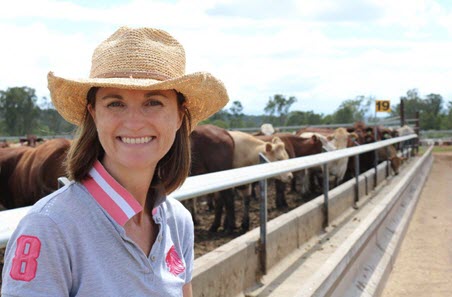Future of weather forecasting
The ability to predict the risk of heat stress at the individual animal level could be a reality for the feedlot industry within the next decade if ongoing improvements in weather forecasting and animal monitoring continue.
That was among the key messages delivered by Katestone Managing Director, Christine Killip, in her presentation to lot feeders and industry stakeholders at BeefEx in October.
 |
| Katestone Managing Director, Christine Killip |
Katestone provides the Cattle Heat Load Toolbox (CHLT), an internet-based service producing targeted forecasts of heat load for feedlot sites in Australia. The service is currently funded by MLA in consultation with the Australian Lot Feeders’ Association (ALFA).
The industry’s hunger for accurate forecasts to enable heat load management of herds continues to grow and is reflected in the number of users of the CHLT website, which increased 11% from 1,625 during the 2016–17 season to 1,814 during the 2017–18 season.
What could the Cattle Heat Load Toolbox deliver in future?
At BeefEx, Christine outlined the key areas of scientific discovery and gave an insight into what the CHLT could deliver in the future as the result of continuing improvements in forecasting and generating more data.
“What might the humble, Cattle Heat Load Toolbox look like in the future?” Christine said.
“A network of high-resolution weather sensors providing better real-time data to identify hot spots; satellite-imagery tracking stock measurements and behaviour, and maybe even measuring temperature of the animals.
“The gap in radar that we see in a large number of rural environments may also be filled by these satellites.
“Integration of smart ear tags with other devices and massive data bases that contain animal genetics, health, movements, feeding rates, growth rates, and all the other observations.
“Facial recognition technology is also being used in the dairy industry so it might not be far away to identify individual animals and even identify the signs of heat stress.
“And of course, super high-resolution hyper local weather forecasts are surely not that far away,” Christine said.
Christine told BeefEx attendees that the key will be to integrate all sources of data to allow artificial intelligence to provide better weather intelligence – more accurate weather forecasts, more accurate models of heat stress in animals, more observations and smarter intelligence systems. She noted that management of the risk of heat stress at the individual animal level may be a reality within the next decade.
Better weather forecasts
Christine said the evolution of weather science, as well as high performance computing and observational systems in the future, are critical to continuing growth in weather prediction.
“In Australia, weather and national disaster are estimated to cost Australians nearly $20 billion nationally per year.
“It’s not hard to see why there is a significant economic benefit from investment in improving weather forecasts.
“Of the benefit that can be quantified, the analysis indicates a cost-benefit ratio of approximately 12:1. That is, for every $1 spent on delivering the Bureau of Meteorology services, the return on investment is about $12 to the Australian economy. It’s estimated that the Bureau of Meteorology services will deliver net economic benefit of nearly $30 billion over the next 10 years. These numbers are just for the public sector.
“In recent years the growth in the private weather sector has been huge and is predicted to be one of the highest growth sectors in the next 10 years.
“Governments see a role for both sectors to reduce the risk of weather and reduce the huge costs associated with weather events.”



